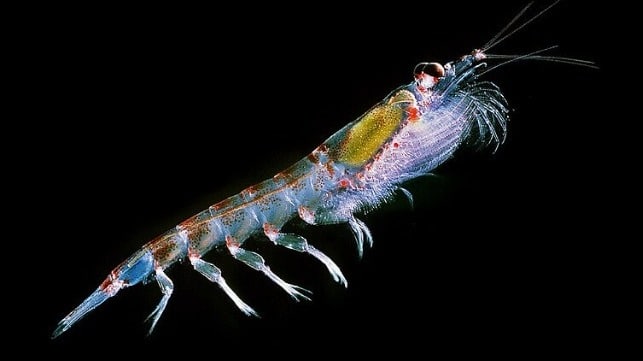Antarctic Krill Store an Astonishing Amount of CO2 in the Deep Ocean
Antarctic Krill: Nature's Tiny Carbon Heroes and the Fight to Save Them

Antarctic Krill: Nature’s Tiny Carbon Heroes and the Fight to Save Them
Antarctic krill may be small creatures, only about 5 cm in length, but their impact on our planet is huge. These shrimp-like animals live in the icy waters of Antarctica and play a vital role in the environment. Even though humans add more carbon to the air every day, krill are doing the opposite—they help remove carbon from the air and store it deep in the ocean, helping to fight climate change.
Krill: The Center of the Ocean’s Food Web
Krill are incredibly important for the animals that live in the Southern Ocean, the sea surrounding Antarctica. They are a key link in the food chain, transferring energy from tiny ocean plants called phytoplankton to larger animals. Many species, such as penguins, seals, whales, fish, and squid, depend on krill for food. In addition to this, krill are fished commercially, creating an industry worth about US $300 million each year.
But krill are not just valuable for food. According to a recent study, these tiny creatures store at least 20 million tonnes of carbon in the deep ocean every year. This helps prevent large amounts of carbon from staying in the atmosphere, where it would otherwise contribute to global warming. The value of this carbon storage could be worth between US $4-46 billion, depending on carbon pricing.
How Krill Store Carbon
Krill eat tiny plants to gain energy, but they don’t use all the carbon they consume. The carbon they don’t use is released as waste (poo), which sinks to the deep ocean and stays there for hundreds of years. This process is extremely important because it removes carbon from the atmosphere, helping to balance the Earth’s climate.
Krill are excellent at this because they are larger than most other plankton, and they produce large, fast-sinking waste pellets. Krill live in massive swarms, which makes this process even more effective. These swarms act like a “carbon superhighway,” quickly transporting carbon to the deep sea.
Challenges in Studying Krill
Even though krill are incredibly numerous, it is hard to count them. They form swarms of different sizes, ranging from small groups to “superswarms” over a kilometer long. These swarms make it tricky for scientists to figure out exactly how many krill are in the Southern Ocean and how much carbon they are storing.
To understand this better, researchers used a huge database of krill density, combined with estimates of their waste and a computer model of ocean currents. This allowed them to calculate how much carbon krill are really helping to store. They discovered that krill-driven carbon storage is similar to the carbon stored in coastal ecosystems like mangroves, salt marshes, and seagrass, known as “blue carbon” habitats.
DNV Certifies first CO2 storage site for flagship Danish Carbon Capture and Storage project
A Call for Krill Conservation
While blue carbon habitats are well-known for their role in storing carbon, krill and their ocean environments are not often discussed in the same way. The results of this study highlight the need to think differently about how we protect the Southern Ocean. Instead of only valuing krill for their role in the fishing industry, we should also protect them for their ability to store carbon and help fight climate change.
The UN High Seas Treaty and the Future of Krill
There is hope on the horizon. The United Nations recently agreed on a High Seas Treaty, which aims to protect biodiversity in oceans that do not belong to any single country. The treaty mentions the importance of keeping ocean ecosystems healthy so they can continue to store carbon. The Southern Ocean, where krill live, is a perfect example of why this is so important.
But krill are facing major challenges. As the planet warms, krill are losing their icy habitat, and scientists believe this situation will get worse. If krill populations shrink, it will become harder for the oceans to store carbon. Although other species might take over this role, it is difficult to imagine any doing it as well as krill.
Working Together to Save Krill
There is some good news, though. Fishery managers, scientists, conservationists, and the krill fishing industry are starting to work together to protect krill. These groups are funding research to help improve how krill are managed and conserved. While there is still a lot of work to be done, these efforts show that there is hope for protecting this vital species and the ecosystems they support.
In the end, Antarctic krill may be small, but they are doing big things for our planet. By protecting them, we are not just saving a tiny crustacean—we are helping to preserve the health of our oceans and the future of our planet.
